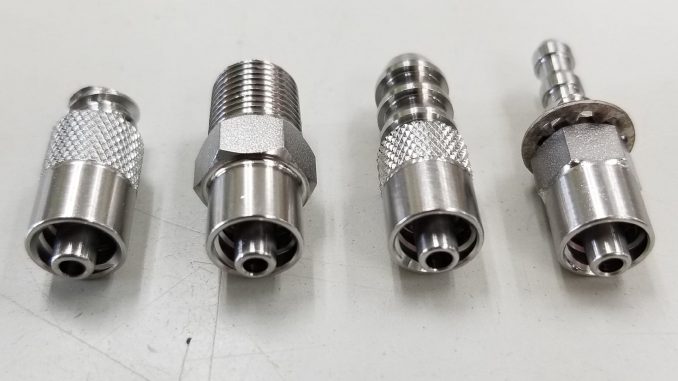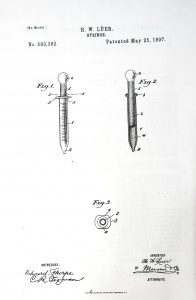
Whenever we’re asked what it is we make at S4J, it’s always a toss-up as to whether the person asking will understand our answer. It comes with the territory of working in a niche market that centers on products that people only really ever see during (hopefully rare) hospital visits, and when they could see them there they are usually more focused on the needle about to be stuck in them. What are these underrated products? They are Luer fittings!
No, not lure like in fishing… Luer! As in, “a standardized system of small-scale fluid fittings used for making leak free connections between a male taper fitting and its mating female part.” (Phew, thanks Wikipedia) And dare we paraphrase Shakespeare’s A Midsummer Night’s Dream in a blog post about a manufactured component when we say, “though they be but little, they are fierce.” Is that a bit dramatic? Maybe. But despite the small size of Luer fittings, they have left a big mark on medical history.
The Luer Fitting’s Origin
Luer fittings are an essential component of the most basic, yet essential technology in the medical field. Its history began in the late 1800s at the zenith of the Second Industrial Revolution, as people around the world, specifically the growing wealthy upper middle class with the means to do so, demanded higher quality health care.
In Paris, France, the medical instrument-maker Maison Wülfing-Lüer, a family business that consisted of a father and his daughter, Amatus and Jeanne Lüer, as well as son-in-law Hermann Wülfing, would change the course of medical history with the invention of the entirely ground-glass Lüer syringe. Their goal with this syringe was to create a safer and more accurate method for injection. Per the U.S. Patent filed by Hermann in 1897, the object was “to provide a syringe having no detachable parts…and which may without difficulty be kept perfectly clean and antiseptic.” While the Lüer syringe shares virtually no resemblance to the Luers we use today, the reasoning and concepts behind the design was the catalyst for the innovation to come that brought us the Luer fitting and, most importantly, better health care.

The Luer fitting Comes to America
It was the Lüer syringe that Fairleigh Dickinson and Maxwell Becton bought the rights to sell in North America with their new company, the eponymous Becton Dickinson. While the product sold well, Dickinson noticed room for improvement by designing a way to keep the needle from slipping out of the nozzle, creating the Luer-Lok component in 1925 with a tapered end that can lock a needle in place with a mere twist. Ever since then, the Luer-Lok became the standard fitting in “vascular, enteral, respiratory, epidural and intrathecal medical devices”, among other things, and had completely permeated the medical field. And when we say permeated, we mean permeated. According to an article from the American Society of Anesthesiologists, there could be as many as 40 Luer fittings and similar small-bore connectors used in just one cardiac patient.
The Modern Luer Fitting
So what makes a Luer connector a Luer connector? According to ISO 80369-7 standards, it is a small-bore connector that contains a conical mating surface with a 6% Luer taper. It can be either the classic Luer-Lok connector or a Luer-Slip connector and as mentioned previously, its main purpose is to provide a secure mean in which liquids and gases can be conveyed in medical equipment. With that in mind, Luer fittings have undergone some necessary changes since its advent, especially over the past few years in order to maintain its relevance in the medical field…but that’s a different story.
While these parts weren’t the initial focus of S4J Manufacturing Services, we have been producing Luer fittings since 1972, and created our own specialty line in 1980. Since then, and we’re going to toot our own horn a little here, we have gone on to become one of the top manufacturers of Luer fittings in the world and have established ourselves as experts on the subject, so stay tuned as we cover more aspects of Luer fitting design!


Leave a Reply